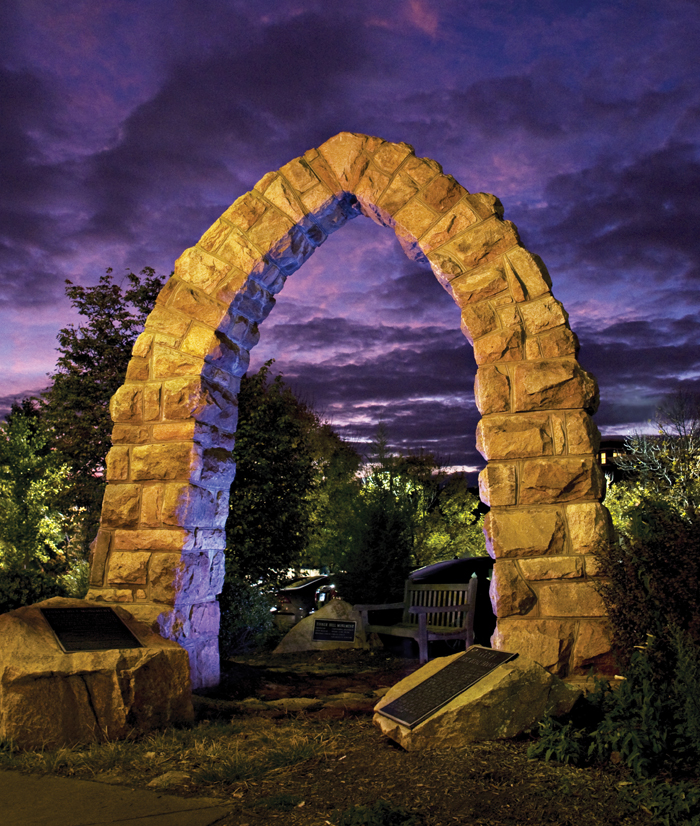NAACP history, preparing for flu pandemic among stories in winter Virginia Tech Research magazine

The first rural branch of the NAACP was a response to the threat of residential segregation in Falls Church, Va.
In 1915, elected officials in Falls Church passed an ordinance that relegated blacks to a small section in town. Joseph B. Tinner and Edwin Bancroft “E.B.” Henderson, when faced with the threat of the segregation ordinance, called a meeting of the Falls Church Colored Citizens Protective League (CCPL) and filed a lawsuit that eventually led to the demise of the ordinance in 1917. In June 1918, the Falls Church and Vicinity Branch of the NAACP (National Association for the Advancement of Colored People) was formally chartered, becoming the first rural branch of the NAACP in the United States.
“Until the Falls Church branch was chartered, the NAACP organized exclusively in urban areas. The Falls Church and Vicinity Branch paved the way for NAACP branches across the rural south,” said Beverly Bunch-Lyons, associate professor of history in Virginia Tech’s College of Liberal Arts and Human Sciences, whose research on the Tinner Hill community and how the NAACP branch was established is the cover story of the winter 2009 Virginia Tech Research magazine.
The edition’s lead story is about how researchers at the Virginia Bioinformatics Institute at Virginia Tech are using computer simulations to show how diseases spread. The models will help decision makers put the brakes on a pandemic.
“The global epidemic of avian influenza in bird populations, as well as the risk of a virulent form of the bird flu virus being transferred to humans, has helped to increase awareness of the very real threat posed by an influenza pandemic,” says Stephen Eubank, deputy director of the Network Dynamics and Simulation Science Laboratory at the Virginia Bioinformatics Institute. “Countries around the globe want to be as ready as possible if a flu pandemic were to be unleashed on the world. Our research team tries to help in this forward planning by creating virtual cities, populating them with synthetic people, and looking at the impact of social contacts on the spread of a disease pandemic in an urban environment. Computer simulations that include the response of populations to a disease outbreak can help to estimate how an outbreak might spread and how different interventions may help to alleviate the disease burden. This approach requires managing large amounts of data, and to cope with this challenge we use high-performance computing methods.”
Other stories in the research magazine are
- Priorities shifted for a microbiologist and an English teacher in China to teach a short-course on writing for English-language scientific journals when the Sichuan province was hit by a 7.9 earthquake. Both jumped in to help their students check the safety of the region's drinking water.
- A student’s Ph.D. research documents the decline of hammerhead sharks and provides management recommendations.
- Hispanic construction workers are at a disadvantage when they must make both cultural and organizational adjustments, while attempting to learn safety requirements in a new language. An English professor's research with the workers resulted in unique instruction materials.
- As many as 50 percent of people over age 75 will either die or will be forced to enter institutional care because of falls. A Virginia Tech group is developing ways to test and measure levels of mobility, to determine the likelihood of falls and indicate specific problems.
- Mothers' influence on young wildlife is more than genetic. Faculty members and students are conducting research to determine how the physiology and behavior of female amphibians, turtles, and birds affect their offspring and the consequences for population health.
- Helping the needy far from home is a growing tourist activity, dubbed "voluntourism." A Pamplin College of Business researcher documents best practices.
- Geoscience researchers working in the rugged St. Elias mountain range find evidence that glacial erosion changes internal mountain structure and the manner in which mountains respond to plate tectonics.
Read the Virginia Tech Research magazine online, or request a copy by e-mailing Susan Trulove.



